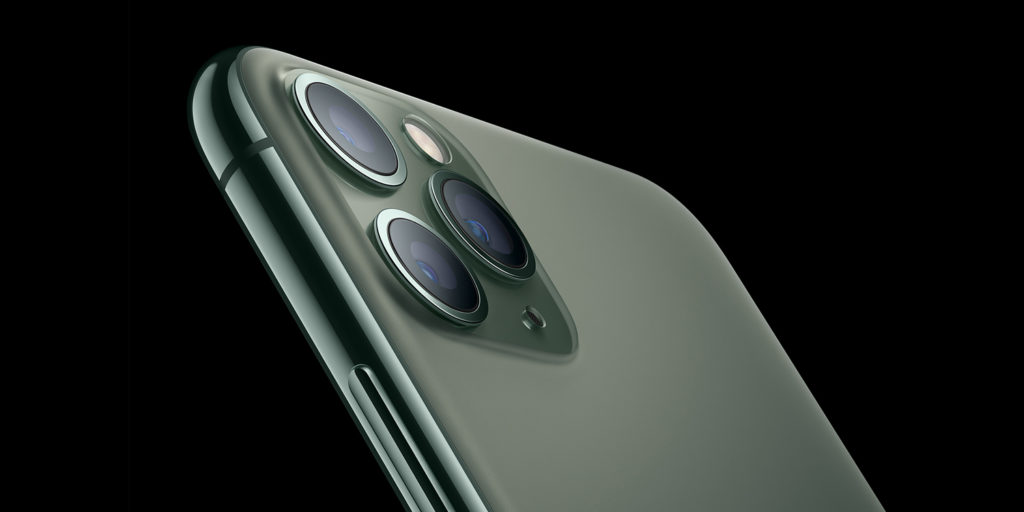Craig Grannell asks whether Apple’s latest flagship is the best iPhone for you
I last year switched from an iPhone 8 Plus to the iPhone XS Max. This year, I again find myself with Apple’s latest flagship phone, the iPhone 11 Pro Max.
But is it worth the outlay? From which iPhones should you upgrade? And is Apple’s finest really worth 400 bucks more than the iPhone 11?
Snap to it
Flip the iPhone 11 Pro Max over and you’ll see it sports three camera lenses. Joining last year’s telephoto and wide lenses is a new ultra-wide, which can zoom photos to 0.5×. This makes wide shots easier – not least when you’ve no room to back up. Usefully, the Camera app ‘previews’ what’s outside the frame behind a semi-transparent interface.
Software plays a major role. Smart HDR further refines highlights and shadows in everything you shoot. Night mode offers a fighting chance to capture decent snaps in low light. During testing, I even got usable shots in a dark room with cracks of light coming through two doors. At gigs, or post-dusk in cities, the results can be stunning.
Image: Apple
Pixel perfect
The screen in the iPhone 11 remains the same as the one in last year’s iPhone XR: an LCD with a resolution of 1792×828 at 326 ppi. The iPhone 11 Pro Max echoes last year’s iPhone XS Max, with a 2688×1242-pixel resolution at 458 ppi. More pixels in a similar space means sharper images.
The iPhone 11 Pro Max also has a bigger contrast ratio than both the iPhone 11 and the iPhone XS Max, and can ramp brightness up to 800 nits in general use – and 1200 in HDR. OLED tech also makes for deeper blacks than you get on the iPhone 11.
If that all makes your head spin, just know that the iPhone 11 Pro Max has a superb, industry-leading screen, whereas the iPhone 11’s is merely very good. Whether you’ll be able to tell the difference in use, though, is a better driver of purchasing decisions than specs – and not everyone can. On that basis, try to see these iPhones in the flesh before you buy.
Form and function
From a visual standpoint, the iPhone 11 Pro Max looks very similar to the iPhone XS Max. It’s slightly grippier in the hand, due to the matt glass finish; however, with a phone this expensive, you’re going to want it in a case.
Elsewhere, last year’s A12 Bionic chip was best-in-class, and the new A13 Bionic further increases Apple’s lead. It makes short work of everything from the basics (launching apps; scrolling social network feeds) to high-end demanding fare (games; scything through 4K footage in video editors). This is a hugely powerful phone.
It also lasts. The improved battery keeps going for hours longer than the iPhone XS Max’s when performing the same tasks, and betters the one in the iPhone 11. This is a change from last year, when the iPhone XR led the pack.
Verdict: iPhone 11 Pro Max
Whether you should upgrade your phone depends on what you’re currently using. If you have last year’s model and aren’t on the Apple Upgrade Program, stay put for one more year, unless you are desperate for the updated camera tech. But if you use an iPhone 8 Plus or older, you’ll be wowed by the leap.
That’s not to say the iPhone 11 Pro Max is flawless. This is a powerful, capable, great-looking phone, but also bulky, a bit heavy, and wallet-smashingly expensive. It starts at $1099/£1149 for the 64GB model, but you’ll want the 256GB one ($1249/£1299) if you shoot a lot of video, want to keep photos on-board, or require headroom for apps and games.
Plumping for the standard Pro only saves 100 bucks, and so a better comparison is with the iPhone 11, which has 64GB ($699/£729), 128GB ($749/£779) and ($849/£879) configurations. The 128GB model is good value – buy it if you’re not fussed about the iPhone 11 Pro Max’s display, longer-lasting battery, and extra camera. But if you want the very best of everything, the iPhone 11 Pro Max is your only choice.

